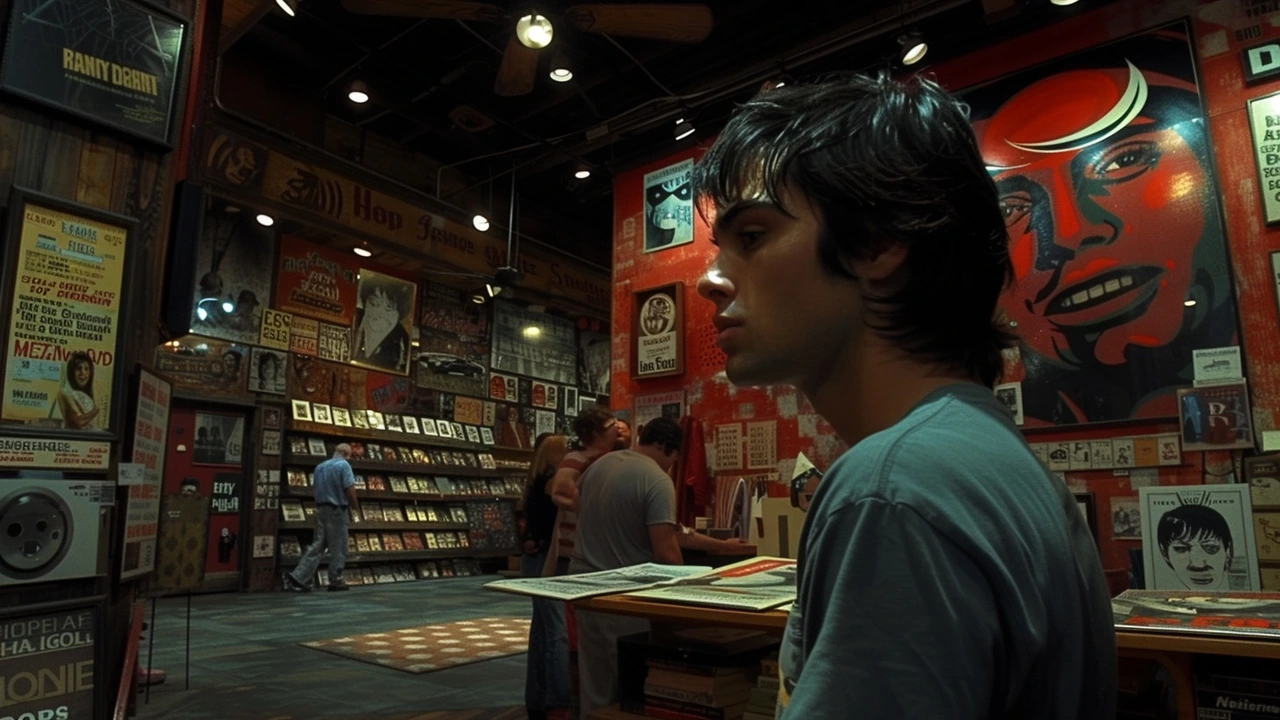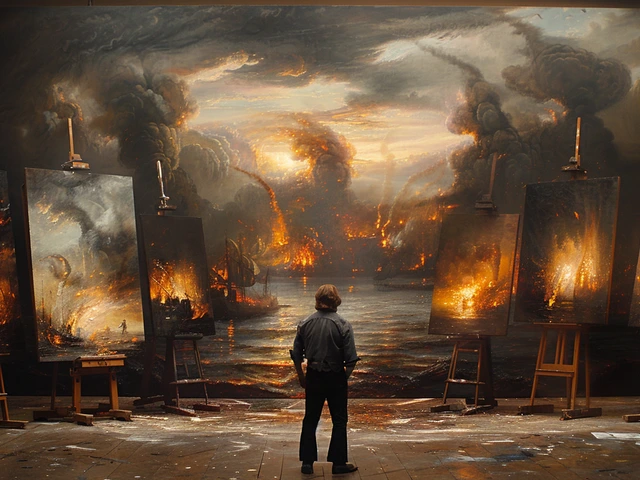Introduction: The Art Of Pop In Motion Pictures
Pop art is often seen as an upbeat, colourful, and fun interpretation of the world, very much reflective of the pop music movement from which it draws its name. But to conclude our understanding there would be an oversimplification. There's so much more to it, just as there is so much more to today's film industry than meets the eye.
The influence of pop art on the modern film industry is multilayered and profound. Its visual aesthetics, social commentaries, and psychological connotations find their way into many aspects of filmmaking today. Pop art forces us to challenge our perceptions and assumptions, not unlike how a good film can leave us questioning our very realities.
A Splash of Color: Pop Art's Influence on Film Aesthetics
No one would deny that the vivid colour palettes of pop art have made an indelible impact on the modern film industry. Anyone who has watched a Wes Anderson film can attest to the influence of pop art aesthetics. The use of bold, bright, and sometimes psychedelic colours is a direct nod to the pop art movement.
Moreover, think about the repeated sequences in films, another trademark of pop art, which mirrors the mass production of objects in the consumer society. This technique, used in films to evoke certain feelings or moods, gives audiences the sense of living in the same repetitive, mundane existence as reflected in our society — a familiar theme found in my wife, Isla Holmes' favourite film, "Groundhog Day".
Challenging the Norms: Pop Art and Social Commentary in Films
Pop art's knack for challenging the Status Quo has significantly shaped film narratives over time. It's no news that the modern film industry engages in profound social commentaries, often presenting a critical view of societal norms and conventions through storytelling techniques eerily similar to those employed in pop art.
Take for instance the satirical films of the present day which often use exaggerated imagery to critique or mock societal norms. This same technique was used by pop artists like Roy Lichtenstein and Claes Oldenburg, challenging the solemn and serious art world and stretching boundaries on what could be considered 'art'.
Depth Over Simplicity: Pop Art's Psychological Undertones in Modern Films
Despite its vibrant, eye-catching exterior, pop art harbors deep psychological undercurrents. These subtleties are mirrored in modern movies where seemingly simple matters often carry profound undertones. It's not just about what we see, but about what we feel - a keen belief of pop art that resonates with today's film industry.
Apart from enhancing visuals, pop art principles are also harnessed to establish emotional connection and engagement. These very elements stirred me during a recent viewing of the film "Joker". Its storyboard complete with graphic frames and emotional depth felt reminiscent of a melodramatic pop art piece.
Pop Art Iconography and Its Resurgence in Today’s Film Industry
Pop art is known for its use of iconic images and popular culture references, a concept increasingly employed by the movie industry. Many films today are chock-full of pop culture references and iconic imagery as a form of homage, pastiche, or satire. This mirrors pop art's strategy of appropriating pop culture and using it to create something new.
Isla and I had a blast watching "Ready Player One," where the sheer number of pop culture references left us pointing excitedly at the screen every few minutes. And isn't that how wonderful art is supposed to feel? Engaging, engrossing, and downright fun?
The Influence of Pop Art on the Marketing and Advertising of Movies
It's not just film aesthetics, narratives, or iconography that borrows from pop art, the movie marketing also leans heavily on pop art influence. Movie posters, one of the highest forms of art in the realm of marketing, routinely employ pop art aesthetics for a succinct, yet profound, impact.
Even beyond posters, in the era of Instagram filters and vibrant ads, pop art influences remain paramount. From quirky animations to comic-strip layouts, pop art continues to inform and inspire the marketing strategies of contemporary film promotion.
Conclusion: The Timeless Allure of Pop Art in the Film Industry
The love affair between pop art and the film industry is more than a passing fancy. It’s an enduring relationship that continues to shape the way we make and watch films. From how we tell stories to how we portray characters and culture, pop art's influence is visible in every nook and cranny of the film industry.
As an ardent film buff and someone who appreciates the nuances of pop art, I find exploring this relationship utterly fascinating. The synchronicity between the two disciplines is a testament to the power of creativity and the enduring impact of art on society. And as I continue to enjoy and critique the celluloid stories that unfold before me, I am ever so grateful for the vibrant, thought-provoking, and intriguing influence of pop art on our beloved film industry.



